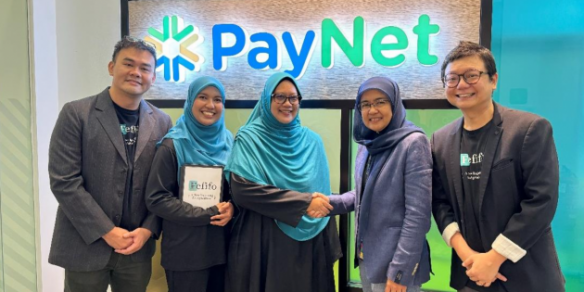Accenture: Most Companies Are Facing Limited Growth Due to an ‘Innovation Achievement Gap’
By Digital News Asia February 3, 2020
- Leader CEOs consistently take 5 steps to close their innovation gap and rise above the rest
- Companies investing in scaling technology innovation create more than 2x revenue growth

While a majority of CEOs express strong confidence in the effectiveness of their current information technology (IT) systems, most are struggling to achieve levels of innovation that drive growth and revenue, according to a global study by Accenture.
“Your Legacy or Your Legend? A CEO’s Guide to Getting the Most Out of New Technologies,” is based on Accenture’s largest enterprise IT study conducted to date, including survey data from more than 8,300 organisations across 20 countries and 885 CEOs.
The research, which analysed the adoption of both mature and emerging technologies – such as artificial intelligence (AI), cloud, blockchain, and extended reality – found that just 10% of companies are making optimal technology investment and adoption decisions and realising the full value of those investments.
At the same time, the study found that 80% of CEOs believe they have the right technologies in place to innovate at scale, and 70% claim to be very knowledgeable of their organisation’s investments in innovation.
“Most companies are risking significant future revenue growth because of the gap between the potential and realised value of their technology investments,” said Paul Daugherty, Accenture’s chief technology and innovation officer. “Our report offers CEOs a new roadmap to help make strategic investments that narrow this innovation achievement gap and fuel higher growth.”

As part of its study, Accenture identified five key factors— or “PATHS” — that distinguish the top 10% of companies from the rest:
- Progress: The extent to which companies apply new technology to evolve business processes across the enterprise. One example is the use of cloud and artificial intelligence (AI) to increase the effectiveness of multiple business processes rather than working in silos.
- Adaptation: Ensuring that IT systems can adapt and respond to changing market conditions with actions such as decoupling from legacy systems and using cloud services as a catalyst for innovation.
- Timing: Creating an appropriate sequence and roadmaps for deploying new technology. This begins with identifying foundational technologies and prioritising adoption based on their enterprise-wide impact.
- Human+machine workforce: Using technologies to augment employees and make work more engaging while simultaneously realising efficiency gains. This could entail delivering technology-augmented training that is personalised and experiential for working with technologies of the future.
- Strategy: Actively aligning business strategy and IT strategy and weaving technology investments together to better seize opportunities.
“Companies that are not actively building enterprise-wide systems that are fully optimised for all of the rapidly-maturing technologies will find it difficult to catch up and will see that reflected negatively in their financial performance,” said James Wilson, managing director of Information Technology and Business Research at Accenture.

More information on “Your Legacy or Your Legend? A CEO’s Guide to Getting the Most Out of New Technologies,” including infographics, is available here. For additional information on Accenture’s Davos research programme click here.
About the Research
“Your Legacy or Your Legend? A CEO’s Guide to Getting the Most Out of New Technologies” is based on a survey of more than 8,300 organisations across 20 industries and 20 countries and was designed to help companies understand and close the innovation achievement gap, which is defined as the difference between potential and realised value from technology investments. The study scored companies on three important dimensions: technology adoption, depth of technology adoption, and organisational and cultural readiness. The report builds on Accenture’s study, “Full Value. Full Stop. How to scale innovation and achieve full value with Future Systems,” released in October 2019, which is also based on the same research.


